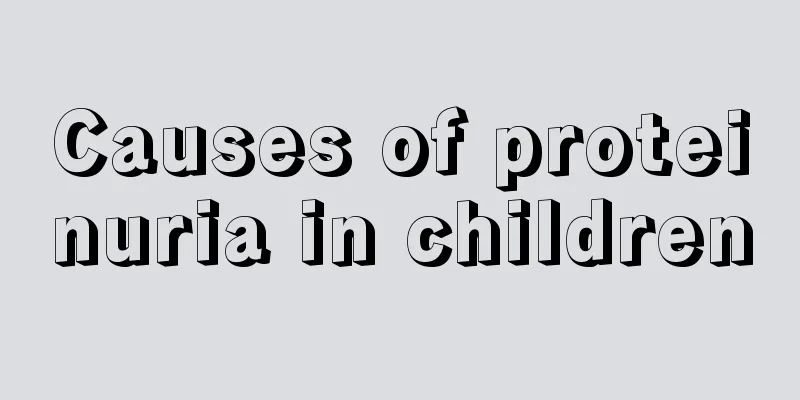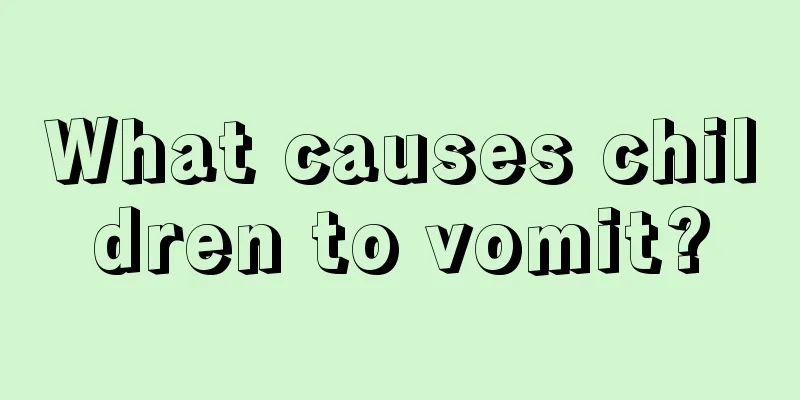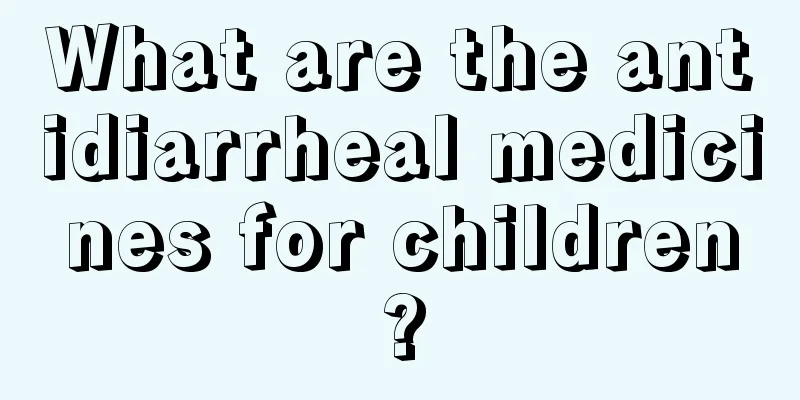Causes of proteinuria in children

|
There are many common diseases in children. When treating children's diseases, we must first understand the child's physical condition, which will be of great help in the treatment of the disease. When treating children's diseases, we cannot choose treatment methods arbitrarily, otherwise it will cause great harm to the body. Parents should pay attention to this. What is the cause of proteinuria in children? Many people are not clear about it. The following is a detailed introduction so that you can have some understanding. Causes of proteinuria in children: From the perspective of kidney function, this is because the filtration function of the glomeruli has decreased, and the protein in the body has leaked from the kidneys into the urine, and the urine protein will appear positive in a routine urine test. However, the appearance of urinary protein is simply a decrease in the kidney's glomerular filtration function. From the perspective of the entire kidney, the kidney function has not been damaged and the kidney has not atrophied. This stage is called the inflammatory response period of kidney disease. It has not yet caused large-scale organic lesions in the kidneys, so the renal function, B-ultrasound and other examination indicators are normal. There are no abnormal conditions such as increased blood creatinine and renal atrophy, and the body does not show any symptoms. A small amount of protein is excreted in normal human urine, which is difficult to measure using general qualitative methods. Normal 24-hour urinary protein excretion in children is related to age. When the protein content in urine exceeds the normal range, it is called proteinuria. Infants and children can be initially diagnosed with proteinuria if the proteinuria concentration is >100 mg/L or the 24-hour urine protein quantity is >150 mg. The occurrence of proteinuria is mainly related to glomerular filtration and tubular reabsorption. Under normal circumstances, the glomerular basement membrane can prevent high molecular weight proteins (molecular weight > 150,000, such as IgM) from passing through. The epithelial cell membrane fissure can prevent the passage of medium-molecular proteins (molecular weight between 50,000 and 150,000, such as albumin and transferrin); it also has a barrier effect on low-molecular proteins. The leaked low-molecular-weight proteins are often reabsorbed or broken down by the glomerular tubules. In normal children, 99% of the protein filtered by the glomerulus is reabsorbed in the distal part of the proximal tubule. When the glomerular filtration function and tubular reabsorption function are impaired, proteinuria may occur. After understanding the causes of proteinuria in children, the treatment of proteinuria in children needs to be based on the causes of the children. Moreover, the treatment of proteinuria in children needs to be carried out for a long time. If the proteinuria in children has not improved, hospitalization is required, which is very helpful in alleviating proteinuria in children. |
<<: What to do if your child has geographic tongue
>>: What are the developmental indicators of a 3-year-old baby?
Recommend
Does it hurt to extract baby teeth?
Dental problems are not age-specific, especially ...
Spring Festival travel rush is here, here are some tips for children’s travel health!
It's the Spring Festival travel season again....
Treatment of an eight-month-old baby with a fever of 38 degrees
As parents, when our children have a fever, we ar...
What should I do if my child has recurrent diarrhea?
Generally speaking, if you encounter a child suff...
Can a baby take a bath?
A cold is a disease with symptoms such as runny n...
How to judge the symptoms of congenital heart disease in newborns?
Nowadays, congenital heart disease in newborns ha...
Why are baby teeth black?
Many people have experienced a similar situation,...
What should I do if I am allergic to a vaccination?
Getting vaccinations may seem like a hassle, but ...
What should I do if my child’s throat is red and swollen?
If a child suddenly develops a red and swollen th...
Symptoms of baby's eyelid hemangioma
Because the immune organs of newborns are not ful...
Is 357 a low-grade fever for children?
The thing that parents worry about most is when t...
What to do if a child has a high fever?
Children's physical health is very easily aff...
Is it dangerous to do MRI for babies?
Some children suffer from internal diseases, so t...
What to do if your child has tooth neuralgia
Dental neuralgia is a common symptom in children....
Why does the baby cry suddenly when sleeping?
Nowadays, every child is the treasure of the fami...









